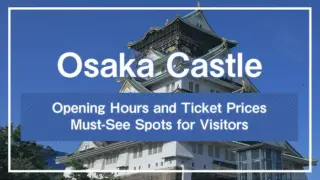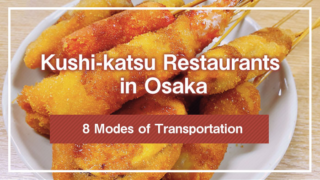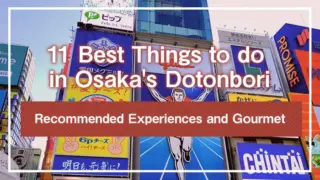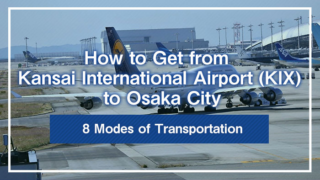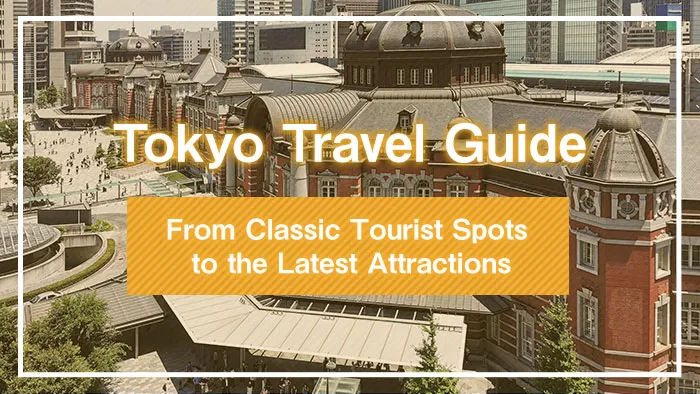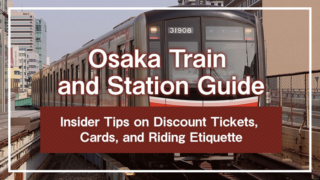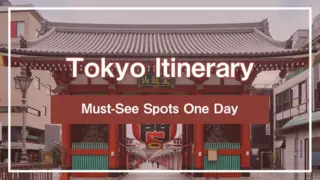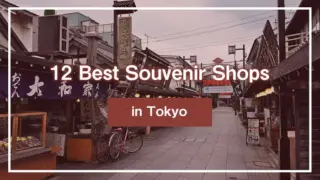Tokyo offers a variety of atmospheres depending on the area. For example, Asakusa is known for its traditional downtown feel, Shibuya is the epicenter of youth culture, and Shinjuku is a bustling entertainment district. Understanding the characteristics of each area can help you choose places that interest you the most.
Additionally, using passes like the Japan Rail Pass or Tokyo Subway Ticket can help you save on transportation costs while allowing you to visit many attractions by train.
In this article, we will explore popular tourist spots in Tokyo, areas suitable for accommodation, and other essential information for your Tokyo sightseeing adventure.
1.Tokyo Travel Guide|What Kind of City is Tokyo?
Tokyo is Japan’s capital city, where tradition and innovation blend seamlessly, creating an exciting and dynamic urban experience.
From historic temples and shrines to cutting-edge art installations, and bustling entertainment districts, Tokyo offers a diverse range of cultural experiences. You can enjoy cuisine from around the world, as well as iconic Japanese dishes such as sushi, ramen, and tempura. Tokyo is also home to numerous Michelin-starred restaurants.
Moreover, like the rest of Japan, Tokyo is one of the safest cities in the world. The city is meticulously clean, allowing you to explore and enjoy your trip with peace of mind.
1-1.Comparing Tokyo and Kyoto
Tokyo and Kyoto are Japan’s premier tourist destinations, each offering unique attractions. Although these general impressions apply, they are just that—generalizations. Both cities have a lot to offer beyond these summaries.
- For a modern urban experience: Tokyo
- To experience traditional Japanese culture: Kyoto
- For shopping: Tokyo
- To see historical buildings: Kyoto
- For diverse entertainment options: Tokyo
- To enjoy beautiful nature: Kyoto
- For gourmet dining: Both Tokyo and Kyoto
Kyoto is known for its temples, shrines, and traditional townhouses, allowing visitors to experience the charm of old Japan. In contrast, Tokyo is a bustling metropolis with skyscrapers, cutting-edge technology, and trends.
However, it’s important to note that these are broad impressions. Kyoto’s city center is also quite urban, and Tokyo has many natural areas, temples, and shrines.
1-2.Best Seasons to Visit Tokyo
Tokyo has seasonal charms that make it a fantastic destination year-round.
・Spring
From late March to early April, cherry blossoms are in full bloom. Popular spots for cherry blossom viewing include Ueno Park, Shinjuku Gyoen, and Meguro River. The city becomes a picturesque landscape of pink blossoms, perfect for hanami (flower viewing) picnics.
・Summer
Summer in Tokyo is lively with various fireworks festivals. The Sumida River Fireworks Festival and the Jingu Gaien Fireworks Festival are among the most famous. These events offer a spectacular display of lights and are a quintessential part of the Tokyo summer experience.
・Autumn
From late November to early December, Tokyo’s foliage transforms into vibrant reds and yellows. Great places to enjoy the autumn colors include Mount Takao and Shinjuku Gyoen. The cooler weather makes it a pleasant time for outdoor activities and sightseeing.
・Winter
Winter in Tokyo is magical with beautiful illuminations lighting up the city. Tokyo Midtown and Omotesando are well-known for their stunning light displays. The city’s crisp, clear winter days are perfect for exploring, and the illuminations add a festive spirit.
Each season in Tokyo offers unique experiences, so choose the best time to visit based on your interests and travel plans.
Ueno’s Cherry Blossom Viewing Spots and Cherry Blossom Festival
1-3.Ideal Length of Stay and Itinerary
The number of days needed for a trip to Tokyo depends on the places you want to visit and your travel style. Generally, a trip of 3 to 5 nights is recommended. If you only want to see the main attractions, a 2-night, 3-day trip is sufficient, though it might be a bit hectic due to travel and wait times.
For a more relaxed pace, 3 nights and 4 days is ideal. This allows you to visit the major tourist spots, enjoy some shopping and dining, and even take a short trip to the suburbs.
To fully immerse yourself in Tokyo, consider a trip of 4 nights or more. This will give you ample time to explore museums and art galleries, visit popular cafes and restaurants, and experience traditional Japanese culture. Additionally, you can take day trips to nearby areas such as Kamakura or Hakone.
2.Popular Tourist Spots in Tokyo
Tokyo has numerous tourist attractions, so it’s a good idea to decide on the places you want to visit in advance. Here are some popular tourist spots in Tokyo that are favored by foreign visitors.
・Sensoji Temple
Sensoji Temple, located in Asakusa, Taito Ward, Tokyo, is the oldest temple in the city and is popular among Japanese and foreign visitors alike, with over 30 million visitors annually. The temple is renowned for its historic buildings, the lively Nakamise Street, and its charming downtown atmosphere.
Kaminarimon, or “Thunder Gate,” is an iconic gate of Sensoji Temple, notable for its large red lantern. It is a popular photo spot where many tourists take commemorative pictures. The approach from Kaminarimon to Hozomon, which spans about 250 meters, is lined with souvenir shops and eateries. It’s an ideal place to find traditional Japanese souvenirs such as crafts, sweets, and kimonos. You can also enjoy sampling various street foods. Additionally, the area around Sensoji Temple retains an old-town feel. Visitors can explore the streets by rickshaw or dine at long-established restaurants.
・Tokyo Skytree
Tokyo Skytree, located in Sumida Ward, Tokyo, is a towering radio tower standing 634 meters tall. One of Tokyo’s newer landmarks, it attracts numerous visitors from both Japan and abroad.
Tokyo Skytree features two observation decks: the Tembo Deck at 350 meters and the Tembo Galleria at 450 meters. Both offer breathtaking panoramic views of Tokyo. On clear days, you can even see Mount Fuji and Mount Tsukuba. The design of Tokyo Skytree is inspired by the traditional Japanese architectural style of the five-story pagoda. Its elegant white curves reflect the Japanese aesthetic. At night, it is illuminated, presenting a fantastical appearance.
At the base of Tokyo Skytree is a commercial complex called Tokyo Solamachi, which houses over 300 shops and restaurants. Visitors can enjoy shopping for souvenirs, dining, and various other activities. The complex also includes an aquarium and a planetarium, making it a place where you can have fun for an entire day.
・Tokyo Tower
Tokyo Tower, standing 333 meters tall, is located in Shiba Park, Minato Ward, Tokyo. Completed in 1958, it has been cherished as a symbol of Tokyo for many years. Its vibrant orange and white coloring is distinctive, and at night it is illuminated, creating a romantic atmosphere.
Though Tokyo Skytree has taken over as the primary broadcasting tower, Tokyo Tower still retains its charm with a retro feel reminiscent of the Showa era. As a historic structure, it offers exceptional views of Tokyo from its observation decks.
Tokyo Tower has two observation decks: the Main Deck at 150 meters and the Top Deck at 250 meters. From the Main Deck, you can enjoy a 360-degree view of Tokyo, including sights like Tokyo Skytree, Rainbow Bridge, and even Mount Fuji in the distance. The Top Deck offers an even higher vantage point, although an additional fee is required.
・Edo-Tokyo Museum (Temporarily Closed)
The Edo-Tokyo Museum, located in Sumida Ward, Tokyo, is a museum that showcases the history and culture of Tokyo from the Edo period to the present day.Visitors can experience the lifestyle and culture of those times through life-sized models, reconstructed buildings, and valuable artifacts.
For example, in the Edo Zone, you can see a life-sized recreation of the streets of the Edo period. Notable structures such as Nihonbashi, theaters, and merchant houses can be observed up close. Additionally, dioramas and video exhibits provide detailed insights into the lives of people in Edo. The Tokyo Zone introduces the development of Tokyo from the Meiji Restoration onward, including scenes from Ginza during the period of Westernization, the reconstruction after the Great Kanto Earthquake, and the Tokyo Olympics, tracing the evolution of modern Tokyo.
Please note that the museum is currently closed for extensive renovation work.
・Tsukiji Market
Although Tsukiji Market relocated to Toyosu Market in 2018, the adjacent Tsukiji Outer Market continues to thrive as a bustling culinary hub, attracting visitors from both Japan and abroad.
The Tsukiji Outer Market boasts over 400 shops, offering a variety of products including fresh seafood, vegetables, fruits, dried goods, and kitchen utensils. High-quality ingredients like tuna, sea urchin, and salmon roe are particularly renowned for their excellence. Additionally, there is an abundance of eateries where you can enjoy gourmet dishes made with fresh ingredients, such as sushi, seafood bowls, and tempura.
・Ghibli Museum
The Ghibli Museum in Mitaka is a dreamlike place where you can experience the world of Studio Ghibli’s works. Created with meticulous attention to detail by Ghibli creators, including director Hayao Miyazaki, the museum’s space makes you feel as if you have stepped into a movie.
Inside the museum, characters, buildings, and landscapes from Ghibli films are faithfully recreated. For instance, you can ride the Catbus from My Neighbor Totoro or take pictures with the robot soldier from Castle in the Sky.
Things to Do in Ginza|Top Tourist Attractions
Things to do in Akihabara: From shopping to gourmet food
3.New Attractions to Check Out in Tokyo
As new leisure spots continue to emerge in Tokyo, those seeking unique experiences should consider visiting the latest facilities. Here are four recommended spots:
・Shibuya Sky
SHIBUYA SKY is an observation facility situated 229 meters above ground, offering a panoramic view of the Shibuya Scramble Crossing. Opened in November 2019, this new tourist attraction features an expansive rooftop where visitors can enjoy a 360-degree view.
The main appeal of Shibuya Sky is the breathtaking view of the Shibuya Scramble Crossing from above. Known as one of the most famous intersections in the world, the sight of thousands of people crossing at once is truly impressive. Visitors can experience different atmospheres depending on the time of day, with the bustling cityscape during the day and the dazzling city lights at night.
・Immersive Fort Tokyo
Opened in March 2024, Immersive Fort Tokyo is a new entertainment facility that redefines the traditional theme park concept. “Immersive” means to be deeply engaged, allowing visitors to experience what it feels like to step into a story.
Visitors can immerse themselves in various narratives through immersive theaters and walk-through attractions. With visuals, sound, and performances that stimulate all five senses, guests will feel as if they themselves have become characters in the stories.
・teamLab Planets
teamLab Planets TOKYO DMM is a digital art museum that opened in 2018. Known for its immersive art installations using cutting-edge technology, this new form of entertainment attracts numerous visitors from both Japan and abroad, allowing them to experience art with their entire bodies.
At teamLab Planets, a fantastical art space is created by combining elements such as light, sound, video, and water. Visitors can enter the artworks, freely move around, and experience the art with their whole bodies. The works by teamLab continuously change based on the movements of the viewers and the passage of time, presenting a different appearance each time. Therefore, no matter how many times you visit, you will never get bored.
・New Area at Tokyo Disney Resort
Opened in June 2024 at Tokyo DisneySea, Fantasy Springs is a magical new area themed around Disney movies Frozen, Tangled, and Peter Pan. This is the largest development in the history of Tokyo Disney Resort, featuring stunning landscapes, thrilling attractions, and unique gourmet experiences.
The Frozen area boasts the attraction Anna and Elsa’s Frozen Journey, while the Tangled area features Rapunzel’s Lantern Festival. These attractions utilize the latest technology to deliver breathtaking experiences that can be enjoyed by both children and adults.
Additionally, Fantasy Springs offers picturesque scenery at every turn. With structures like Arendelle Castle and Rapunzel’s Tower faithfully recreating the movie worlds, the area provides perfect photo spots for visitors.
4.Recommended Areas to Stay in Tokyo
When sightseeing in Tokyo, here are five areas to consider when choosing where to stay:
・Shinjuku
Shinjuku is a vibrant area located in the heart of Tokyo and is a popular lodging spot for foreign tourists due to its diverse attractions. Known as the city that never sleeps, Shinjuku offers a wealth of entertainment and gourmet experiences day and night. Kabukicho is famous as Japan’s largest entertainment district. The neon-lit streets are lined with restaurants, bars, and nightclubs, bustling with activity until late at night.
Additionally, Shinjuku Station is a massive terminal station served by JR lines, private railways, and subways. With excellent access to various parts of Tokyo and convenient connections to Narita and Haneda airports, Shinjuku is an ideal base for Tokyo sightseeing.
・Tokyo Station Area
The area around Tokyo Station is situated in the heart of Japan’s capital and offers excellent access to major cities both domestically and internationally. This district seamlessly blends modern skyscrapers with historic buildings, serving as both a business hub and a tourist attraction. The Tokyo Station building, known for its beautiful red brick design, is designated as an Important Cultural Property. Nearby attractions include the Imperial Palace and Ginza, which feature historical buildings and cultural facilities that make it a compelling area for sightseeing.
Accommodation options range from luxury hotels to business hotels and hostels, catering to various budgets and preferences. The Marunouchi area, in particular, is home to numerous high-end hotels.
・Shibuya
Shibuya is a quintessential youth district in Tokyo, constantly brimming with energy and pioneering new trends and culture.In addition to globally famous landmarks such as the Shibuya Scramble Crossing and the Hachiko statue, the area boasts a wide variety of stores, including department stores, fashion buildings, miscellaneous goods shops, and record stores. It’s perfect for hunting unique items or selecting souvenirs.
Moreover, Shibuya is home to an array of stylish cafes, restaurants, izakayas, and ramen shops, offering a diverse range of dining options.
・Roppongi
Roppongi is an area where sophisticated urban vibes merge with a rich international culture. It features a skyline of skyscrapers alongside lush parks, museums, and a variety of restaurants, making it a popular destination both day and night.
With numerous foreign embassies and multinational companies, Roppongi exudes an international atmosphere. Many places have English-speaking staff, providing a comfortable experience for foreign tourists. The area is home to world-renowned museums such as the Mori Art Museum, the National Art Center, and the Suntory Museum of Art, making it a haven for art enthusiasts.
In large complex facilities like Roppongi Hills and Tokyo Midtown, visitors can enjoy shopping at high-end brand stores and select shops.
・Shinagawa
Shinagawa is located in the southern part of Tokyo and offers excellent access to Haneda Airport. Shinagawa Station is served by the Keikyu Line, which directly connects to Haneda Airport, making travel to and from the airport extremely convenient. Additionally, Shinagawa Station is a stop on the Tokaido Shinkansen, providing good access to the Kansai and Chubu regions.
The area also boasts various family-friendly attractions, including an aquarium, cinemas, and bowling alleys. It’s also conveniently located for accessing Odaiba, an artificial island in Tokyo Bay which features shopping malls and theme parks.
5.Tokyo Transportation Guide
When traveling in Tokyo, the main modes of transportation are trains, buses, taxis, and walking. Understanding the benefits and drawbacks of each and using them according to your needs will allow you to have an efficient and comfortable trip.
Most major tourist destinations in Tokyo are accessible by train. The extensive railway network and frequent service mean you can generally travel on schedule.Utilizing passes like the Japan Rail Pass or Tokyo Subway Ticket can make train travel more economical.
Taxis are also convenient, but services like Uber and Grab are not yet available in Japan. Therefore, using taxi apps such as GO is recommended.
How to Travel from Tokyo to Kyoto by Shinkansen | Alternative Methods Also Introduced
6.Useful Items for Tokyo Travel
Here is a list of items useful for foreign tourists traveling to Tokyo:
- Passport
- Cash and credit cards
- Pocket Wi-Fi or a SIM card with data access
- Power plug adapter (Type A plug)
- Portable battery
- Comfortable walking shoes
- Seasonal clothing
- Foldable umbrella or rain gear
- Translation app
- Tokyo subway and train map (app or paper)
- Reservation confirmations (hotel, tickets, etc.)
- Sunscreen
- Hand sanitizer
- Tissues
- Medications (regular and prescription)
- Lightweight daypack or bag
In Japan, Type A power outlets are the standard. If your country uses a different plug type, you’ll need a plug adapter. Check in advance and purchase or rent one if necessary.
While Tokyo has free Wi-Fi spots, renting a mobile Wi-Fi router or purchasing a SIM card is recommended for a consistently reliable connection.
Conclusion
Tokyo has many tourist spots. Listing the places you are interested in and prioritizing them in advance will allow you to sightsee efficiently. Tokyo is vast, so visiting multiple areas in one day can be challenging. It is recommended to focus on one area per day and thoroughly enjoy it.
Additionally, some places like museums and art galleries require reservations in advance, so make sure to check and book as early as possible.
Use the tourist spots introduced here, as well as model courses found in guidebooks and websites, to create a plan that suits your interests and stamina.
*This article is based on information available as of July 2024.


